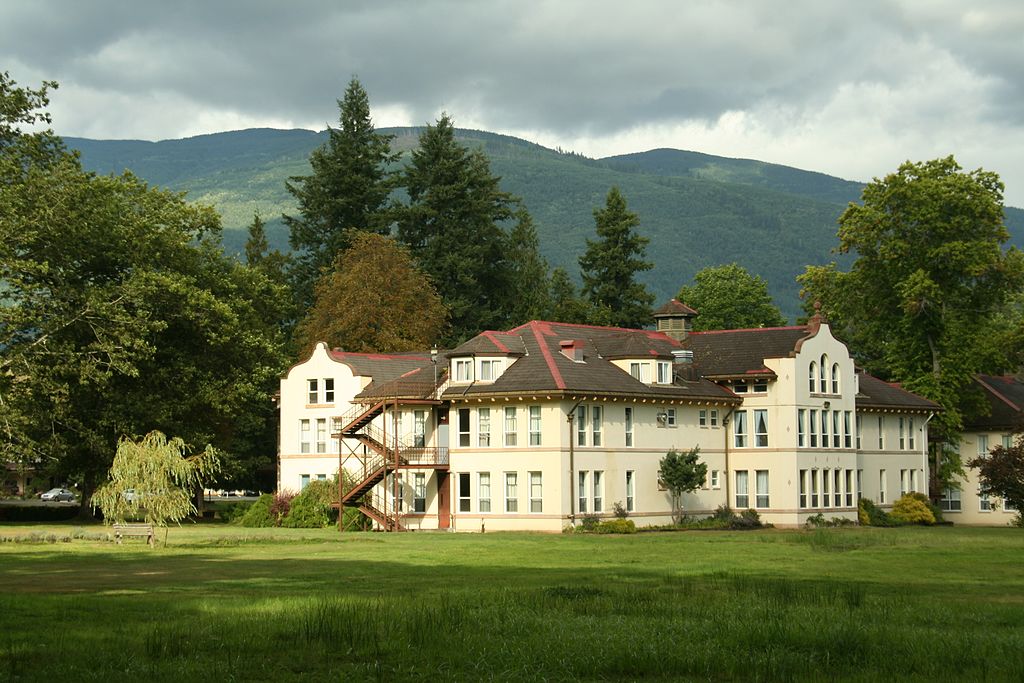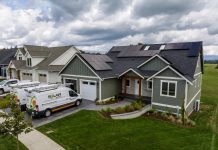One of the wonderful things about the Skagit Crescent is the rich history of its development. Part of that began in 1910 when the first building was opened on what is now known as Cascade Job Corps. But the original, intended use of the land once known as “Duke’s Hill” was to create a state-of-the-art asylum for the harmless insane (as opposed to criminally insane) with the idea of producing a place of soothing, therapeutic views conducive to healing for the patients, rather than warehousing people too difficult to cope with in society, often stigmatized as a burden. Thus, Northern State Hospital we born.

The men who designed the grounds for this scenic farm colony were Fredrick Law (Jr.) and John C. Olmstead. These two were half-brothers and sons of Fredrick Law Olmsted (Sr.), the famous designer of New York City’s highly celebrated Central Park. The decision to include these park designers, who also created Seattle sites such as Volunteer Park, Green Lake Park and the renowned Woodland Park (home of The Woodland Park Zoo), was made with the notion that beautifying the landscape by design would add quality to the lives of the patients.
John Olmstead had a matter of heart involved in his desire to design the asylum’s grounds, for his famous father had spent his final years in McLean Hospital near Boston, Massachusetts, suffering from post-traumatic disorders relative to his legacy as a designer of open, sprawling parks for everyone. Olmstead Sr. had seen horrors in his life altogether too common in nineteenth century America. At the age of three he witnessed his mother’s overdose of laudanum. Later he saw the death of his sister from measles, a plague in the time before vaccinations, and at 10-years-old he watched a teacher burn to death. In his school years, he was abused by a teacher. It is easy to understand how all of this trauma caught up with this brilliant architect’s mind. The true irony in his hospitalization was that he designed the grounds of McLean in 1895, only years before his death there in 1903. John’s desire to pay homage to his father’s vision and tragic death (and life) was true to his father’s vision:
“By introducing nature to the urban scene, he offered respite from the pathogenic influences of city life, the symptoms of which,” he wrote, “are nervous tension, over-anxiety, hasteful disposition, impatience, [and] irritability.” Such symptoms could be reversed through exposure to pleasing rural scenery: “It is thus, in medical phrase, a prophylactic and therapeutic agent of value….”” (from Harvard Magazine)

This held true for Northern State Hospital, as evidenced by the sprawling, fertile grounds that provided walnut trees, grains, hay and grass for feeding a considerable dairy herd and in later years a poultry farm that turned quite a profit for the state. The radical idea of occupational therapy took hold at the turn of the century. Combined with the sweeping vistas of the Cascade Range and the fresh air away from the pollution of the cities, this was an environment more conducive to the well being of the patients. Although there was the inclination to exploit patients as a natural resource (the hospital actually ranked as one fourth of the Skagit Valley’s gross income for decades), the aim of the various directors of the hospital was to provide safe haven, a healthy environment and a goal of bringing healing to these poor souls.
The most notable being Dr. Charles H. Jones. During his time as director from 1950 until 1960, Jones brought the hospital on par with the best psychiatric institutions. His installing of a nurse’s dormitory and inclusion of a theater was only surpassed by his approach to treating patients as welcome guests rather than prisoners. His focal point was the admitting building, which instilled a feeling of safety rather than incarceration. During his time as director the hospital flourished,as a place of medical results (the discharge rate in his era soared over 400 a year with an intake of around 650 patients a year.) and production. The hospital’s farm produced enough, along with his building a kitchen and dining hall, to feed 2,500 people daily.

Although there are many stories published about the lobotomy’s, electric shock and other horrific treatments that plagued the entire psychiatric system that included Northern State, the ever relished tales of hauntings (replete with an investigation by the paranormal television show Ghost Hunters) and famous Halloween ghost tours, it is good to remember the vision of the Olmstead family of Northern State Hospital as a place of natural healing and beauty. In this hard life we share as humans, we have this amazing capacity for beauty and the desire to treat well those less fortunate, a legacy that has carried over to the Skagit Valley to this very day.







































